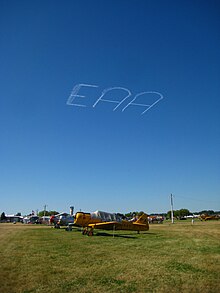
KLM Royal Dutch Airlines, legally Koninklijke Luchtvaart Maatschappij N.V., is the flag carrier of the Netherlands. KLM is headquartered in Amstelveen, with its hub at nearby Amsterdam Airport Schiphol. It is a subsidiary of the Air France–KLM group and a member of the SkyTeam airline alliance. Founded in 1919, KLM is the oldest operating airline in the world, and has 35,488 employees with a fleet of 110 as of 2021. KLM operates scheduled passenger and cargo services to 145 destinations.

Aerobatics is the practice of flying maneuvers involving aircraft attitudes that are not used in conventional passenger-carrying flights. The term is a portmanteau of "aeroplane" and "acrobatics". Aerobatics are performed in aeroplanes and gliders for training, recreation, entertainment, and sport. Additionally, some helicopters, such as the MBB Bo 105, are capable of limited aerobatic manoeuvres. An example of a fully aerobatic helicopter, capable of performing loops and rolls, is the Westland Lynx.
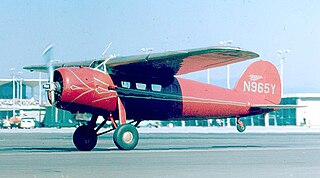
The Lockheed Vega is an American five- to seven-seat high-wing monoplane airliner built by the Lockheed Corporation starting in 1927. It became famous for its use by a number of record-breaking pilots who were attracted to its high speed and long range. Amelia Earhart became the first woman to fly solo across the Atlantic Ocean in one, and Wiley Post used his to prove the existence of the jet stream after flying around the world twice.

The Spirit of St. Louis is the custom-built, single-engine, single-seat, high-wing monoplane that was flown by Charles Lindbergh on May 20–21, 1927, on the first solo nonstop transatlantic flight from Long Island, New York, to Paris, France, for which Lindbergh won the $25,000 Orteig Prize.

The British Aerospace 146 is a short-haul and regional airliner that was manufactured in the United Kingdom by British Aerospace, later part of BAE Systems. Production ran from 1983 until 2001. Avro International Aerospace manufactured an improved version known as the Avro RJ. Production for the Avro RJ version began in 1992. Later on, a further-improved version with new engines, the Avro RJX, was announced in 1997, but only two prototypes and one production aircraft were built before production ceased in 2001. With 387 aircraft produced, the Avro RJ/BAe 146 is the most successful British civil jet airliner program.
This is a list of aviation-related events from 1922:
The MacRobertson Trophy Air Race took place in October 1934 as part of the Melbourne Centenary celebrations. The race was devised by the Lord Mayor of Melbourne, Sir Harold Gengoult Smith, and the prize money of £15,000 was provided by Sir Macpherson Robertson, a wealthy Australian confectionery manufacturer, on the conditions that the race be named after his MacRobertson confectionery company, and that it was organised to be as safe as possible. A further condition was that a gold medal be awarded to each pilot who completed the course within 16 days.

The de Havilland DH.89 Dragon Rapide is a 1930s short-haul biplane airliner developed and produced by British aircraft company de Havilland. Capable of accommodating 6–8 passengers, it proved an economical and durable craft, despite its outdated plywood construction.

The BAC Jet Provost is a British jet trainer aircraft that was in use with the Royal Air Force (RAF) from 1955 to 1993. It was originally developed by Hunting Percival from the earlier piston engine-powered Percival Provost basic trainer, and later produced by the British Aircraft Corporation (BAC). In addition to the multiple RAF orders, the Jet Provost, sometimes with light armament, was exported to many air forces worldwide. The design was also further developed into a more heavily armed ground attack variant under the name BAC Strikemaster.

The Royal Aircraft Factory S.E.5 is a British biplane fighter aircraft of the First World War. It was developed at the Royal Aircraft Factory by a team consisting of Henry Folland, John Kenworthy and Major Frank Goodden. It was one of the fastest aircraft of the war, while being both stable and relatively manoeuvrable. According to aviation author Robert Jackson, the S.E.5 was: "the nimble fighter that has since been described as the 'Spitfire of World War One'".

The Travel Air Manufacturing Company was an aircraft manufacturer established in Wichita, Kansas, United States in January 1925 by Clyde Cessna, Walter Beech, and Lloyd Stearman.
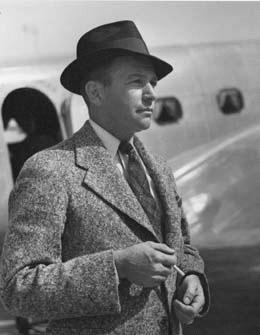
Clyde Edward Pangborn, nicknamed "Upside-Down Pangborn", was an American aviator and barnstormer who performed aerial stunts in the 1920s for the Gates Flying Circus. He was its half-owner, chief pilot and operating manager, working in partnership with Ivan R. Gates. In 1931, Pangborn and co-pilot Hugh Herndon Jr. flew their plane, Miss Veedol, on the first non-stop flight across the Pacific Ocean.

Roscoe Turner was a record-breaking American aviator who was a three-time winner of the Thompson Trophy air race and widely recognized by his flamboyant style and his pet, Gilmore the Lion.
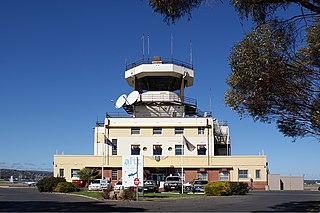
Parafield Airport is on the edge of the residential suburb of Parafield, South Australia, 18 km (11 mi) north of the Adelaide city centre and adjacent to the Mawson Lakes campus of the University of South Australia. It is Adelaide's second airport and the third busiest airport in Australia by aircraft movements. Although owned by the Government of Australia, the airport is leased to and managed independently by Parafield Airport Ltd., a wholly owned subsidiary of Adelaide Airport Limited.

Oliver Colin LeBoutillier was an American aviator and flying ace. Serving with the British Royal Naval Air Service and Royal Air Force in the First World War, LeBoutillier scored 10 aerial victories, witnessed the death of Manfred von Richthofen and was a vigorous proponent of Captain Roy Brown as the victor over Richthofen. Post war, he became a stunt pilot for movies, a skywriter, and an aviation instructor whose most famous student was Amelia Earhart. Later, he became a civil aviation inspector.
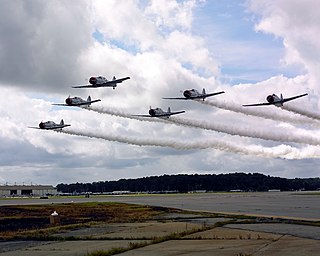
The GEICO Skytypers Air Show Team was an aerobatic team that performed at airshows around the United States using six SNJ-2 World War II-era planes. The team was most recently sponsored by GEICO. The smoke system was originally controlled by a manually wired rig, then by paper punch card messages, and eventually able to handle 50,000 messages that could be reprogrammed in flight.

Aerial advertising is a form of advertising that incorporates the use of flogos, manned aircraft, or drones to create, transport, or display, advertising media. The media can be static, such as a banner, logo, lighted sign or sponsorship branding. It can also be dynamic, such as animated lighted signage, skywriting, or audio.
Pi in the Sky was an experimental, aerial art display where airplanes spelled out pi to decimal 1,000 places in the sky over the San Francisco Bay Area. The display took place on September 12, 2012. It was then displayed again in Austin on March 13, 2014, during the SXSW festival, at which time it was said to be the largest art piece ever displayed in the state of Texas.

The Flitfire is a special edition of the Piper J-3 Cub that was used to raise funds to support the British war effort in World War II. The name "Flitfire" is a play on words referring to the RAF's most well-known fighter, the Supermarine Spitfire, which was and is a symbol of British resistance during the Battle of Britain.
Suzanne Asbury-Oliver is an American and, with her husband, Steven Oliver, became America's only husband and wife professional skywriting and aerobatic team. Asbury-Oliver aviated for PepsiCo and now has her own skywriting company, Olivers Flying Circus. She estimated that in a typical year, she writes 500 sky messages in over 150 locations nationwide.
